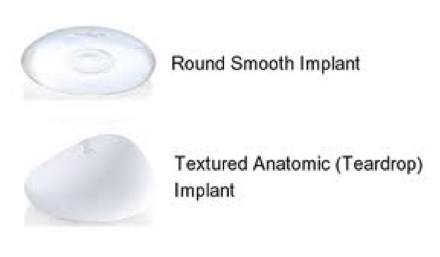Article
Are Shaped Breast Implants Better Than Traditional Round Ones?
Author(s):
Though shaped breast implants were recently approved by the US Food and Drug Administration (FDA), plastic surgeons must not forget the proven track record of round implants in the United States.

Though shaped breast implants were recently approved by the US Food and Drug Administration (FDA), plastic surgeons must not forget the proven track record of round implants in the United States.
For more than 50 years, round breast implants have offered patients the type of results that have made breast augmentation the most popular cosmetic procedure performed in the US year after year. Round implants not only add volume to patients who previously had well-shaped breasts, but they also provide an effective way to even out breasts of different sizes.
That said, there is a lot of buzz surrounding the new shaped breast implants, which are thought to appear more natural in comparison to round implants.
So, which implants are better? And how can we best guide our patients to determine which type of implant is the right choice for them?
First, it is essential for our patients to always start with a consultation appointment with a board-certified plastic surgeon. During this consultation, it is important to educate the patient about the potential risks and recovery time, as well as establish their goals for the breast augmentation. Once a surgeon has a better understanding of the patient’s lifestyle, goals, and anatomy, then he or she can form a professional opinion about which implant option is best suited for the patient.
The truth is, women with Betty Boop-like figures have been appearing all over TV, movies, and the Internet. As a result, patients don't always know what normal breasts look like, so it is the job of plastic surgeons to meet the specific breast augmentation goals of patients, as well as manage their ideas of what look is appropriate for their specific body types.
Though neither shaped nor round breast implants are necessarily superior, it is important for surgeons to figure out which type of implant is best for each particular patient. The obvious difference between the 2 implants is that shaped implants tend to look more like natural breasts, due to their teardrop shape, while round breast implants are just that: round.

When a patient undergoes a breast augmentation that uses shaped implants, the upper slope of her breast will not appear as full as it would if round implants had been used. Since natural breasts also lack a strong fullness in the upper pole, shaped implants have the potential to produce a more natural-looking result, which is what many patients hope to achieve.
Some prospective breast augmentation patients are looking for implants that will give their breasts the right proportionate shape, rather than a bigger size. When this is the case, it seems shaped implants are the appropriate option because of their natural appearance.
Nevertheless, round implants can still achieve great results that shaped implants cannot. But on the same token, plastic surgeons now have a new tool to correct issues and create a different look that certain patients may desire.
Robert T. Grant, MD, MSc, FACS, is Chief of the combined Divisions of Plastic Surgery at New York-Presbyterian Hospital-Columbia University Medical Center and New York-Presbyterian Hospital-Weill Cornell Medical Center. He is also Associate Clinical Professor of Surgery in the College of Physicians and Surgeons at Columbia University and Adjunct Associate Professor of Clinical Surgery at Weill Cornell Medical College. For more information about Dr. Grant or to contact him, visit his website at www.robertgrantmd.com.




